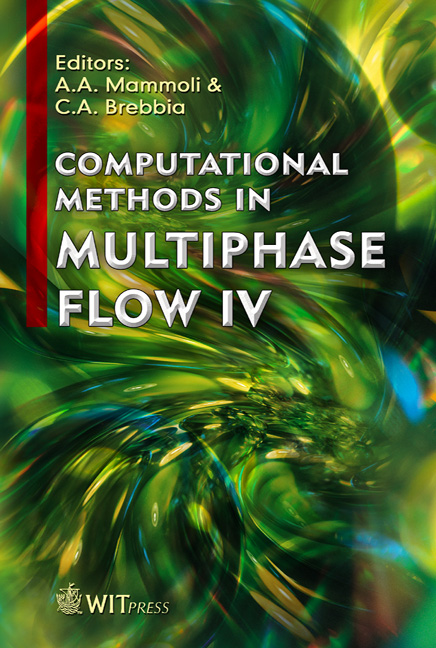The Transition Of An In-line Vortex To Slug Flow: Correlating Pressure And Reaction Force Measurements With High-speed Video
Price
Free (open access)
Transaction
Volume
56
Pages
10
Published
2007
Size
1,026 kb
Paper DOI
10.2495/MPF070341
Copyright
WIT Press
Author(s)
B. J. de Witt & R. J. Hugo
Abstract
In this work, the performance of a Slug Flow Expander (SFE) was investigated. Multiphase flow consisting of air and water was injected into the SFE. Critical flow rates of air and water were identified that caused transition to the slug flow regime. It was observed that at water flowrates of 1.00 L/s and air flowrates above 3.00 L/s, the flow regime in the SFE transitioned to slug flow. A high-speed digital camera was used to visualize the flow inside the SFE. Wall pressure and reaction force measurements were synchronized with the high-speed camera. Autocorrelation, cross-correlation, and power spectral density functionswere performed on reaction force, wall pressure, and air-core diameter. Power spectra of reaction force and wall pressure revealed strong energy peaks at low, middle, and high frequencies. Dominant low frequency energy (2.9 Hz and 4.4 Hz) was found to be attributed to the rotation rate of the liquid component in the SFE. The dominant middle frequency spikes (39.5 Hz, 31.3 Hz, 24.4 Hz for reaction force; 20 Hz, 15.6 Hz for wall pressure) are believed to be attributed to the formation, convection, and exiting of the liquid slugs from the SFE. It is speculated that the dominant high-frequency spikes are attributed to both mechanical vibrations and pressure fluctuations caused by the flow facility pump. Keywords: Slug Flow Expander, high-speed digital video, pressure and reaction force correlation, transition to slug flow regime.
Keywords
Slug Flow Expander, high-speed digital video, pressure and reaction force correlation, transition to slug flow regime.





